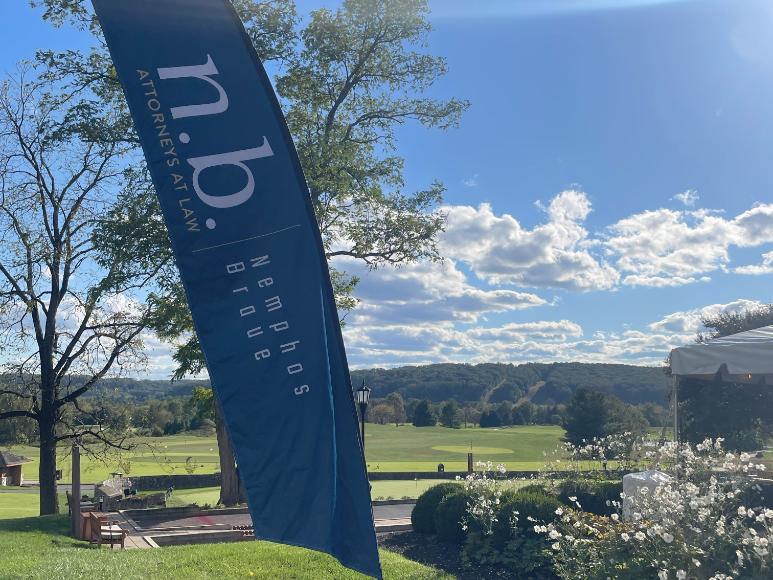Maryland’s Joint COVID-19 Response Legislative Work Group gave a briefing on September 16, 2020 including updates from the Maryland Department of Health and the Johns Hopkins Bloomberg School of Public Health. Find key takeaways below.
Robert Neall, Health Secretary, Maryland Department of Health
Maryland Strong: Roadmap to Recovery
- Testing – 2.2 million cumulative PCR tests conducted in the State of Maryland, with testing volumes of over 20,000 tests a day within the State.
- Contact Tracing – Over 33,000 cases and over 41,000 contacts reached and interviewed by Contact Tracers throughout the State.
- PPE – Over 78 million pieces of Personal Protective Equipment distributed, with requests being fulfilled as we speak including supplies for schools and the November Election.
- Hospital Surge Capacity – Approximately 6,700 surge beds were identified, and we continue to make Advanced Medical Tents, ICU Modulars, and Alternate Care Sites available for COVID patients.
Dennis Schrader, Chief Operating Officer, Maryland Department of Health
COVID-19: What We’ve Done – Testing
- Any Medicaid recipient is able to get COVID-19 tested with no co-pay and no limits through their managed care organization.
- The two largest state-backed testing sites are located at the Baltimore Convention Center and at Six Flags America (Prince George’s County).
- The state has provided logistical and/or financial support to community-based testing sites (VEIPs, pop-up sites) across the state, including many in minority communities.
- Working with our hospital, community, urgent care, provider practice, and retail partners to increase access to COVID-19 testing:
- Most PCR-based test labs are within a 24-48 hour turnaround window.
- Securing 250,000 rapid antigen tests (the Becton Dickinson Veritor system) and negotiating for another 250,000 rapid tests with other manufacturers.
- Reviewing other rapid test platforms to lower the turnaround time of COVID-19 testing.
Average Percent of Total Tests by Facility Type: 6/15/2020 -9/8/2020
Testing Report
- Use of LabGun COVID-19 test assays (as of 9/15)
- Over 210,000 assays used over the summer.
- 130,000 assays deployed to CIAN in Frederick, over 72,000 used.
- 370,000 assays deployed to UMPA lab, over 138,000 used.
- Used in settings ranging from campuses and nursing homes to community-based sites.
- Procurement unanimously approved by the Board of Public Works on September 2.
Antigen and Rapid Point of Care Testing
- Purchase of 250,000 Becton Dickinson Veritor system tests last week.
- Benefits of rapid point of care tests, including antigen-based tests, are fast results, low costs, and simplicity of use.
- Tests in 15 minutes can enable healthcare professionals to make decisions about isolation, patient care and identifying symptomatic individuals in the earliest stages of infection.
- Rapid tests can be paired with PCR-based diagnostic tests, which remain the most accurate.
- MD is working through the large-scale deployment of these test platforms with the assistance of the Rockefeller Foundation.
- Deployment in congregate care settings will allow new options against the spread of the novel coronavirus and to help assist in Maryland’s recovery.
Dr. Jinlene Chan, Acting Deputy Secretary, Public Health Services
#MasksOnMaryland Campaign
- First phase of a three-phase multimedia strategic communications effort.
- Campaign focuses on the benefits of wearing a mask, rather than the mandate; positions masks as a way to carry on doing things we enjoy, not as a barrier to life.
- To date, has produced two toolkits —one specifically for Hispanic audiences —both shared with other state agencies, local health departments and community-based partners.
- MDH is supporting mask distribution events in communities statewide.
- The events reinforce the importance of masks, get masks into the hands of Marylanders who need them the most, and establish dialogue and good will.
- MDH has hosted several events since late July, including partnering with community-based organizations such as local NAACP chapters.
- MDH is developing a plan to provide materials (masks, branding, guidance) for communities to host their own events.
- This concept can be effective in any community in the state.
COVID-19: Minority Outreach
- Launching a multimodal, multimedia, and multilingual communications and messaging campaign that includes:
- WMAR -(July / August) -100,000 digital ads on free statewide testing
- English/Spanish PSAs on Bounce-TV on testing
- Other PSAs airing on EffecTV (Balt) WBOC-LT (Telemundo Salisbury), Hearst Anyscreen OTT (statewide), MPT, Urban Networks/Radio One, and social media.
- Utilizing a mobile public health education unit to provide COVID-19 education and messaging to minority communities by selected zip codes.
- Providing support to HBCUs undertaking COVID-19 and minorities survey research projects.
- MDH has partnered with Anne Arundel, Balt. City and County, Montgomery, and Prince George’s Counties’ local health departments on COVID-19 outreach, including $1.2 million in state funding.
Hispanic Outreach Task Force
- An interagency task force of partners from the State (MDH/MEMA/DHS), Baltimore City, and faith-based/community organizations.
- Goal is to reduce the rate of positivity within the Hispanic community starting with the 21224 zip code.
- Focus is on providing operational support and technical assistance to Baltimore City and non-governmental partners for:
- Human and social services
- Non-congregate housing/isolation strategies
- Contact tracing
- Prevention and mitigation
- Communications and outreach (mobile outreach, flyers and educational materials, and a sound truck in targeted neighborhoods to deliver educational messages)
- Exploring a short-term COVID-19 Intervention Pilot Program for individuals who test positive and their families.
- The pilot will serve 10 families and includes isolation, medical care and services, cash assistance, food delivery, and wrap around services.
- Based on the pilot program, an Intervention Protocol will be established.
- Depending on the success of the pilot, it may be expanded to other Hispanic communities as needed in the fall.
Contact Tracing Overview
- Focusing on public awareness and participation with interviews.
- Support cases and contacts through isolation and quarantine
- Working with the Department of Information Technology to develop a plan to implement the Apple-Google exposure notification technology.
- Reduce barriers to testing for contacts.
COVID-19 Vaccine
- Operation Warp Speed (OWS): Federal effort to accelerate the delivery of safe, effective COVID-19 vaccines to states.
- What we know:
- Vaccines may need 2 doses, ultra-cold temperature storage.
- First shipments will have limited numbers of vaccine, with increase in volume over time.
- Initial priority populations will likely include high-risk populations and health care workers.
- Planning efforts underway:
- Vaccine Tracking
- Communication & outreach
- Logistics and operational
Next Steps
- Our focus in the Fall is to:
- Expand and Communicate the #MasksOnMaryland Campaign as well as Flu Vaccination Outreach.
- Prepare for COVID-19 vaccine deployment.
- Roll out new antigen testing and other rapid Point of Care test platforms to keep Maryland open.
- Refine our data analytics to improve our publicly available COVID-19 data.
- Integrate our contact tracing analysis with testing efforts for more targeted intervention.
- Ensure hospital surge capacity for COVID + Flu.
We’ve heard almost nothing about the Medicaid population living in assisted livings. What is the testing situation? What protocols have been required? Who is monitoring that?
Q&A
Senator Delores Kelley: We’ve heard almost nothing about the Medicaid population living in assisted livings. What is the testing situation? What protocols have been required? Who is monitoring that?
Dennis Schrader: We will get you a more detailed answer but let me start by saying we have a requirement for every assisted living facility with more than 50 people to be tested and there is an order out that causes them to do that. From there we are encouraging the smaller facilities to follow the CDC guidelines, but because of the threat of potential outbreaks in larger facilities and the impact, that’s where our focus is. We can get you more information.
Senator Delores Kelley: Regarding hospice patients. I’ve received mail from hospice organizations indicating that when we shut down the large nursing home campuses they were denied access as if they were not providing a medical service. Has that issue been resolved?
Webster Ye: Currently the CMS guidance that was issued on May 18th generally speaking, prohibits visitation in most circumstances the one exception that our federal partners have given us is end-of-life the state of Maryland has adopted the federal requirements. We’re looking to see how we can make changes and to make changes in a common sense and clinically safe manner.
Delegate Shane Pendergrass: Do we have our own positivity goal? Is it under 5% using Hopkins numbers? Where are we trying to get to? Are these new campaigns and efforts enough to get us to the goal?
Robert Neall: I think there are three criteria that we watch very closely. The methodology we’re using is the methodology used by the CDC, there are also two other value measures. We need to watch hospitalizations very carefully because even though they are a lagging indicator, that shows what’s going on on the ground. The last is a national measure of cases per 100,000. Today we have a positivity rate of 3.44%, for a seven day rolling average. Our hospitalizations are 347, which is on the low end of the range. We only have 86 people in the ICU, we are at 9.5 cases per 100,000.
Senator Paul Pinsky: Once we’re back to in person school, what will the protocol be if a few students or teachers in the classroom come down with the virus? I’m looking for some common protocols of how school systems should act. It’s concerning the idea of returning kids to school when we don’t know how to handle the bumps in the road. We need some type of road map so all school boards and superintendents have some direction. Are the governor’s metrics enough direction? What are the common back-end protocols that all jurisdictions could have?
Robert Neall: I’m going to answer your question with a great deal of trepidation. No one knows the public school systems better than you. I would say the metrics were the metrics that we had. It would be hard to annunciate a policy that is fair between counties.
Dr. Jinlene Chan: When we selected those metrics it was with much discussion. We wanted to keep it as simple as possible to give some indication of community transmission. We looked at all the metrics that we discussed and others, and landed on those two and we looked at other states in terms of metrics they are using. Including Pennsylvania, Delaware, New York, and test positivity which is what we report out on is one of those metrics that also has to be coupled with the cases per 100,000. The guidance we provided did not say all school systems can open with no precautions. It was very clearly to say within certain precautions practicing social distancing, masking, temperature checks, and hand washing. If all of those things can be implemented carefully then there may be some opportunity to bring kids back. Every school system is different and every school building is different, the needs of different communities are quite variable there needed to be some flexibility provided in our guidance.
Senator Clarence Lam: Regarding the rapid test and standard nasal swab test. With the rapid test the sensitivity is much lower than the standard nasal swab test, so the difference there does lend itself to differences and how it should be applied. Has that been taken into account with the methodology that is being used? Can you tell us how many of the South Korean tests we have left? What is the plan moving forward for obtaining more of the nasal swabs the PCR based tests?
Dennis Schrader: We are developing the protocols with our clinicians because of that, you’re exactly right. If there is a positive that becomes a probable positive then we would have to confirm it with a PCR test. The specificity means there are very few false positives, the challenge is the false negatives. The frequency of the testing would go up because you would have to test more than once. These tests are more cost effective so our thought process is that the cost of the point-of-care test being lower will facilitate more frequent testing than the PCR testing. We had 500,000 South Korean tests, we’ve used 210,000, so we have 290,000 left. Our plan has been to build around the private sector’s capacity, the UMB lab is a buffer for the surge and they have a plan they’re putting together for additional testing. the private sector appears to be managing their inventory and supply chain so they are able to provide enough testing. we still want to maintain this buffer for a possible surge. We’re also planning for multiplex testing.
Senator Melony Griffith: When can we expect Maryland’s version of the iPhone app Covidwise to become active?
Dr. Jinlene Chan: We are currently working with Apple right now, some of the technology they have is still in testing.
Dr. Thomas Inglesby, MD Director, Center for Health Security, Johns Hopkins Bloomberg School of Public Health
- Maryland’s reported seven day average is 3.4%
- There are about 9 cases per day per 100,000 people in the state
- Maryland is about 21st in lowest incidents in the country.
- The highest risk activities for transmission remain to be indoor recreation and entertainment activities as well as indoor establishments where people gather for prolonged periods of time.
- CDC reported this week that people who developed Covid were twice as likely to have been to restaurants and more likely to have gone to a bar or a coffee shop.
- There are between 18,000 – 25,000 tests being done daily in the state.
- CDC reported this week that 121 people have died under the age of 21 between February – July from Covid.




